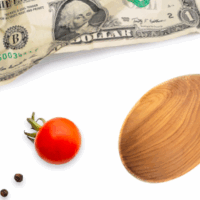
I attended junior high school during the years when home economics was required to graduate from school. This is where I learned the scientific difference between baking and cooking. This is also where I discovered my love for baking and my dislike for snickerdoodles, but that is a story for another day.
The main difference between following a recipe for baking and one for cooking is the exactness of executing the recipe. When baking, it is recommended you follow the recipe as closely as possible to achieve the result of a lovely, sweet batch of cookies or delicious bread. If you do not measure with exactness, then your outcome will differ from the intended result. For example, your cookies might end up hard, bitter or even flat.
However, if you are cooking a meal there is more flexibility when following a recipe, you are able―at times―to interpret or customize the recipe to your taste and still end up with a delicious dish. Now, obviously there are limits to this interpretive freedom. If you want to make lasagna you cannot substitute cabbage leaves for pasta and expect your family to compliment you on the dish or even to recognize what has been placed before them.
It is in following the steps of the recipe, even allowing for personal taste, that successful dishes are created. So it is with the successful financial criminal. In our headline, “Cooking quality money laundering: A recipe to aid AML professionals,” the author states that a “recipe is not just a guide to laundering; it is a blueprint to understanding modern-day money laundering.” Money launderers will follow a recipe to deceive and hide their illicit gains, but as new technology evolves, money launderers will alter their recipes to add the needed kick to their original money laundering recipes. It is up to anti-money laundering (AML) professionals to keep up the pace and continue to evolve their proverbial cooking skills to stop money launderers.
This edition contains additional money laundering prevention recipes in the form of articles. Two additional headline articles include “Europe’s dirty secret: Waste trafficking,” which details what the EU is doing to address the inadequate monitoring of waste trafficking and the establishment of the Waste Shipment Enforcement Group. The third cover headline, “Digital wealth, physical harm: The rise of crypto kidnapping” discusses a new variant of kidnapping for ransom toward those within the crypto industry and those enriched by crypto. The article goes on to outline how to mitigate the risk of crypto kidnapping and best practices for the private sector.
Finally, we have the crème de la crème with two interviews focusing on the accomplishments of two exceptional women. The first is Oksana Ihnatenko. Ihnatenko is helping to lead the charge in her native Ukraine in the fight against financial crime. Despite living in a war-torn country, Ihnatenko has managed to champion partnerships through the Center for Financial Integrity (CSI) set up by the Royal United Services Institute (RUSI) and managed to pass her CAMS, right after an air raid. Read more about this exceptional anti-financial crime (AFC) professional here. The second interview is with Jessica Sunkamaneevongse, a first-generation Thai American who has given back to her country by serving in the armed forces and is transitioning her investigative and fraud prevention knowledge to a career in the AFC sector. Read more about her career here.
My favorite part about baking, whether it is following a recipe or going to a restaurant with a great chef, is the end product―diving into the delicious baked goods or meal in front of me. I hope you will all feast upon the words in this deliciously crafted AFC cuisine edition full of recipes to inspire you to fight financial crime. Bon appétit!
Karla Monterrosa-Yancey, CAMS
Editor-in-Chief
Follow us on ![]() : @acamstoday,
: @acamstoday, ![]()










